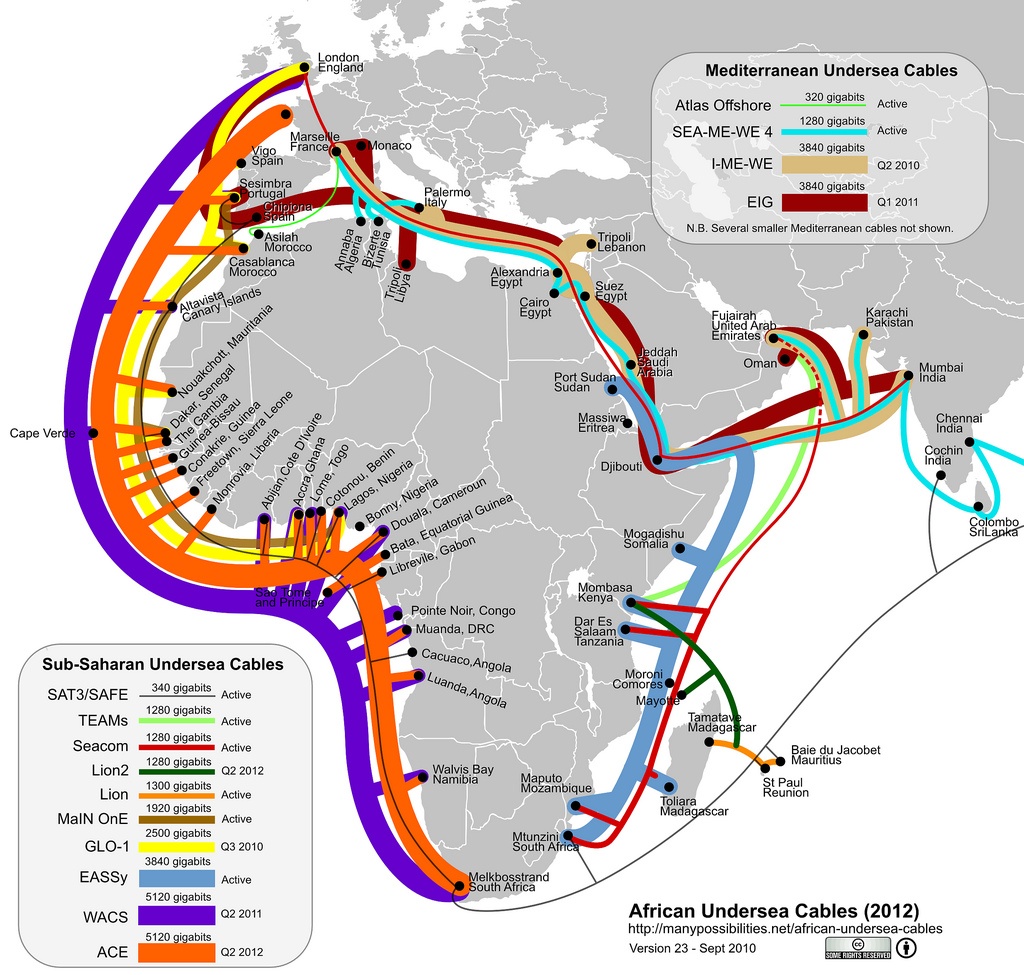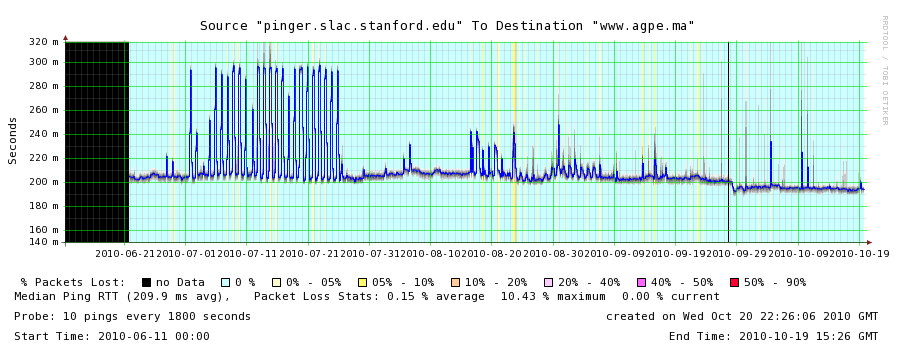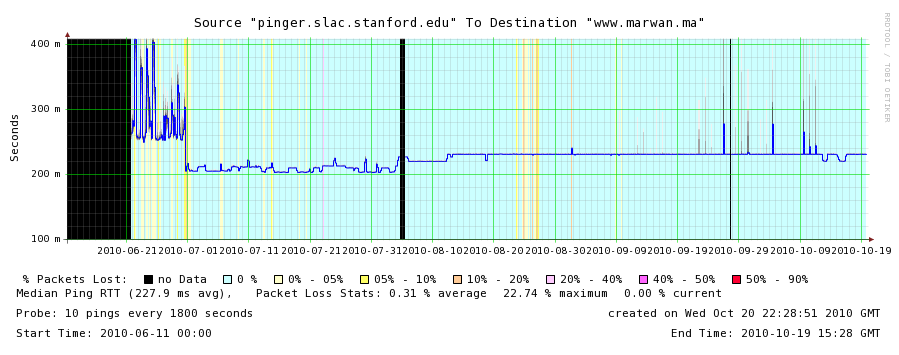Introduction
As of October 2010, two three new African submarine cables became active and fully functioning.
| MaIN OnE (phase 1) | EASSy | LION |
|---|---|---|---|
Location | African West Coast, South Atlantic Ocean | African East Coast, Indian Ocean | Malagasy East Coast, Indian Ocean |
Cost (millions of USD) | 240 | 265 | 52 |
Length (km) | 7,000 | 10,000 | 1,070 |
Capacity (Tb/s) | 1.92 | 3.84 | 1.30 |
Completion/Inauguration | July 2010 July | ||
Ownership | US, Nigeria, AFDB | African Telecom Operators 90% | Mauritius, Madagascar, France |
Updates can be gathered from here and herefor individual updates, see wikis MaIN OnE, EASSy and LION. The status of various submarine cables connecting Africa to the rest of the world as seen in October 2010 can be seen is shown below.
The landing points of these cables and countries are listed below.
- MaIN OnE (phase 1) - going from North to South
- Casablanca, Morocco
- Altavista, Canary Islands
- Dakar, Senegal
- Abijan, Côte d'Ivoire
- Accra, Ghana
- Lagos, Nigeria
- EASSy - going from North to South
- Port Sudan, Sudan
- Djibouti
- Mogadishu, Somalia
- Mombasa, Kenya
- Moroni, Comoros
- Dar es Salaam, Tanzania
- ToliaryToliara, Madagascar
- Maputo, Mozambique
- Mtunzini, South Africa
- LION - going from West to East
- Tamatave, Madagascar
- St. Paul, Reunion
- Baie du Jacobet, Mauritius
Effect of sub-Saharan African cable systems coming online
To show the effects of these cables coming online, we shall consider minimum RTTs and jitter. We should see a considerable decrease in the minimum RTT and jitter for hosts that have direct connection with active submarine cables.
MaIN OnE (phase 1) landing points, inaugurated July 2010
1. Morocco
We have three PingER nodes in Morocco. The node www.agpe.ma shows no particular change in minimum RTT due to MaIN OnE coming online. The node was experiencing problems before and during June but reappeared in late June. There were considerable spikes during July with minimum RTTs jumping around. This might be due to day/night differences in internet traffic. This could also be due to reconfiguration of routing tables because of shifting to new cable system. There is a noticeable difference in the minimum RTTs for the node at www.marwan.ma. The RTT drops from 250ms in June to 200ms in July and then stabilizes around 230ms from August onwards. It is interesting to observe the spikes in the month of June when the MaIN OnE wasn't online and the sudden drop in RTT during July. It is also interesting to note the stability of minimum RTTs after July.
2. Canary Islands


